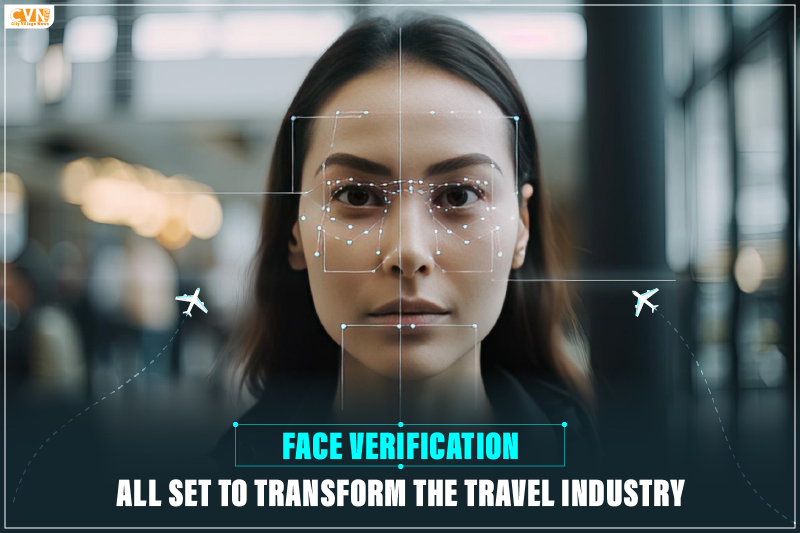With the world entering into the fourth industrial revolution, technology is tremendously transforming the business operations. Everyday we come across new innovations that leave us astonished. The things seen in science-fiction movies and novels are becoming the reality of life. One such innovation is facial recognition technology, an advanced form of biometrics that is extensively used by businesses around the world.
Face Verification Solution is one of the applications incorporated by various industries to enhance their business operations. From banking institutes to retailers and e-commerce platforms, healthcare to the corporate sector, everyone is seen incorporating facial recognition technology and the travel industry is no exception.
Biometrics as an Identity verification service
The true identity of a person plays a crucial role in business security and safety. The travel industry has to deal with travelers and customers from all around the world, you never know who they are. Any technology that can make the industry secure from threats and speed up the processes to improve customer experience is notably beneficial. In fact, within the airports, the verification of travelers and individuals entering the airport is a major security concern.
Face verification is used as an ID verification service that identifies and authenticates the identity of an individual. The travel industry, especially airports, are making use of face verification solutions to seamlessly verify the people in real-time and grant access to authorized people only, keeping trouble makers out.
Global momentum and real-world impact
What was once sci-fi is now routine. The facial recognition market, already worth $7 billion, is expanding fast and is on track to triple by 2032. In the U.S., facial scans have verified over 300 million travelers and intercepted more than 1,800 identity fraud cases.
India is catching stride with Digi Yatra, bringing facial-based travel to life at major airports like Delhi and Bengaluru. Over in Singapore, Changi Airport’s Terminals 3 and 4 run smoothly thanks to smart biometric gates.
Efficiency is rising. So is security. But so are concerns. The U.S. is now debating a law that would return to manual checks by default and require immediate deletion of biometric data after use.
Enhanced Customer Experience
Based on the principles of advanced artificial intelligence principles, face verification is facilitating the businesses to improve customer experience and convenience through personalization. These contactless biometric systems map the human faces in a real-world environment to those in databases to and frictionlessly tailor services by identifying them first.
Biometric verification eliminates the need for physical and face-to-face verification that not only saves user time but also reduces the business effort and cost of the verification process. Moreover, AI-powered verification solutions leave no room for spoof attacks hence, making the verification safe and secure hindering the presence of fraudsters.
Facial recognition technology offers a personalized experience to the individuals, for instance, at airports the system can identify the persons on their arrival by scanning their faces and let them pass through the security checks without any paper verification while being greeted by the staff with their names. This provides a seamless, personalized and contactless walkthrough experience to the individuals.
Also read: How Biometric Technology is Enhancing Airport Security
Security
In the travel industry, facial recognition is being used in a number of ways to improve security within an area; for instance, airports are the public place and are need extensive security measure to keep criminals and fraudsters at bay and don’t allow them to enter the area since it can put the lives of thousands of passengers at stake. Verifying each person manually through their ID documents is quite time-taking and cumbersome. Moreover, what if a person is presenting a fake ID card to gain access.
Such security challenges are effectively addressed by face verification solutions that when incorporated with document verification services provide an extensive layer of security. These ID verification services can verify and authenticate an individual in real-time preventing face and ID spoof attacks. In fact, even if facial recognition is used single-handedly, it can identify the troublesome entities and prevent crime; hence alerting the security staff regarding the presence of a criminal.
Moreover, digital facial recognition can be integrated with the criminal database. This gives an advantage to the business in a way that the systems can automatically detect and alert the staff about the presence of people having criminal or bad behavior history, and therefore the representative can quickly take action lifting public security.
Frequently Asked Questions
What is face verification and how does it work?
Face verification is a biometric technology that identifies and authenticates individuals by analyzing facial features. It captures a live facial image and compares it with a stored image (such as a passport photo) to verify identity.
How is face verification used at airports?
At airports, face verification is used at multiple points such as check-in, security clearance, boarding gates, and immigration. It speeds up passenger processing by eliminating the need for manual document checks.
Is face verification safe and secure?
Yes, face verification is generally secure when implemented with proper encryption and data protection measures. It helps reduce identity fraud and spoofing by using advanced liveness detection and anti-spoof technology.
Which airports use face verification technology?
Major airports like Delhi, Bengaluru, and Varanasi in India (via Digi Yatra), as well as Changi Airport in Singapore and several U.S. airports, have implemented face verification systems for faster and safer processing.
Do I need to register in advance for face verification at the airport?
In most cases, yes. Programs like Digi Yatra require travelers to register on an app and upload their ID and travel details beforehand. Once registered, the system uses your face as your travel pass.
| Disclaimer: City Village News claims no credit for the images featured on its blog site. All the visual content is copyrighted to its respective owners only. We mention the source name of the picture whenever possible and found. However, please get in touch with us if we miss acknowledging the owner’s source. In case the owners don’t want us to use their images, we will remove them promptly. We believe in providing proper attribution to the original author, artist, and photographer. |

